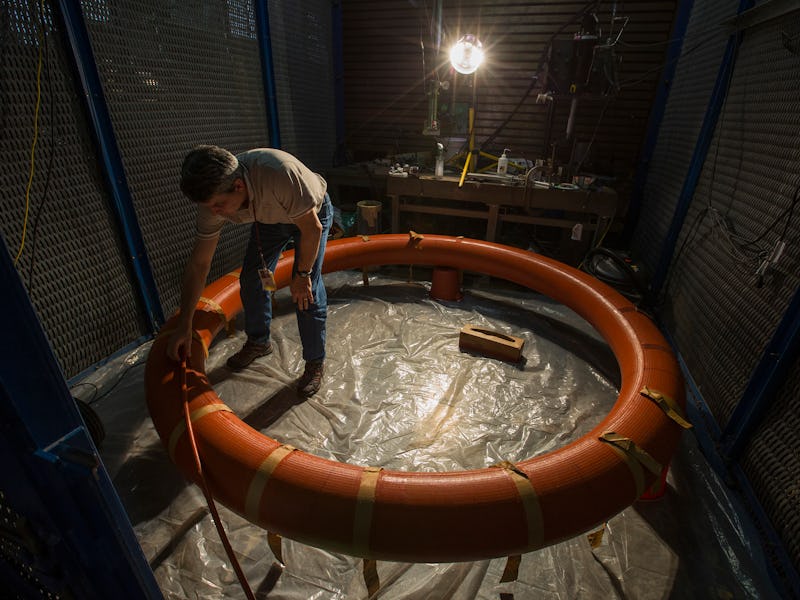NASA Successfully Tests Inflatable Heat Shield for Future Mars Mission
The parachute-like material could help astronauts land on the surface of the red planet.

Another day at NASA means another day preparing for a future mission that sends astronauts to Mars. Getting there means we’ll have to invent and test a ton of new technology. And lo: NASA engineers just successfully tested an inflatable heat shield that could help us land on Mars and other deep-space worlds that have incredibly hot atmospheres.
When a spacecraft lands on a world with any sort of atmosphere, it needs protection to keep from disintegrating under the pressure and heat. And if your plan is to make a long journey out to someplace else, you’ll want that heat shield to be pretty compact but still cover your ship well enough.
So there are a few kinds of methods for achieving these goals, including a heat shield that can be tightly packed into a rocket and inflate when needed.
Engineers at NASA’s Langley Research Center in Hampton, Virginia recently tested out such a heat shield — called the Hypersonic Inflatable Aerodynamic Decelerator, or HIAD — by treating a 9-foot diameter article of the material to the kind of situations characteristic of a typical spacecraft launch.
Test engineer Sean Hancock folds the HIAD 9-foot diameter test article to simulate what would happen before an actual space mission.
HIAD is like a parachute: It uses the drag of the planet’s atmosphere to help slow the spacecraft down during descent — all while also keeping the vehicle from dissolving into a fiery dust.
The prototype survived four different trials that tested HIAD’s ability to withstand leaks and damage during packing and unpacking. The next step is to see if the technology can handle the stress of being tightly packed in a rocket and the high temperatures of planetary descent.
It looks promising for helping deliver cargo, instruments, and even astronauts to the planets. NASA also thinks it might even be used for helping bring back cargo. If all goes well, the astronauts that land on Mars in a couple decades will approach the surface like parachuters being dropped off from far in the sky.